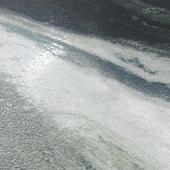Mosbuild Preview - Logel: machines for flatness inspection of tiles
The ceramic market has undergone continuous development as technological research has created ever more complex and detailed materials. Today’s market is no longer satisfied with a perfectly flat and smooth tile, but looks for products that stand out for the presence of inserts and irregularities that lend the material a sense of dynamism. The production of such materials with an irregular structure and surface makes the sorting operation much more complex due to the difficulties of identifying criteria for determining whether or not a product needs to be rejected given that the material’s main characteristic is its irregularity.
Machines for flatness inspection of tiles currently use optical proximity sensors that operate in the visible (laser) and infrared ranges. The use of these technologies has brought considerable advantages in terms of duration and maintenance compared to old roller sensors, although it has made measurements colour sensitive and has also led to problems of incorrect measurements due to reflections. Furthermore, the use of increasingly modern and precise sensors has made it possible to detect all the surface irregularities of a textured material.
We therefore need to clarify the concept of textured material by dividing irregular materials into two categories:
- products that contain inserts of other materials but generally have a flat surface: this category includes tiles containing fragments of quartz or glass that may affect the flatness measurement by disturbing the optical sensor;
- products that have a non-flat surface consisting of depressions of various size.
In either case, a flatness measurement technique based on scanning the entire surface of the tile is ineffective. A sensor making a measurement at a point where a piece of quartz is present acquires an incorrect value; and in the case of an irregular surface the ideal plane that provides the best approximation to the measured surface is not meaningful for the purposes of determining flatness as it is determined by considering the depressions on the tile’s surface. This latter problem is accentuated by the fact that not all tiles have a similar surface structure so the calculated ideal plane depends on the mould that was used to create the tile. An effective and applicable method for eliminating these problems involves using suitable mathematical algorithms to identify the points on the tile that are not significant for the purposes of calculating flatness (an area with a quartz crystal or a surface depression).
These points are rejected automatically and are not considered when classifying the material. In order to be effective, these algorithms must be used with a measurement technique that does not involve scanning the entire surface of the material but only measuring a few significant points of the material. The most significant points are those in proximity to the edges of the tiles as they are placed next to each other during installation.

Did you find this article useful?
Join the CWW community to receive the most important news from the global ceramic industry every two weeks





















